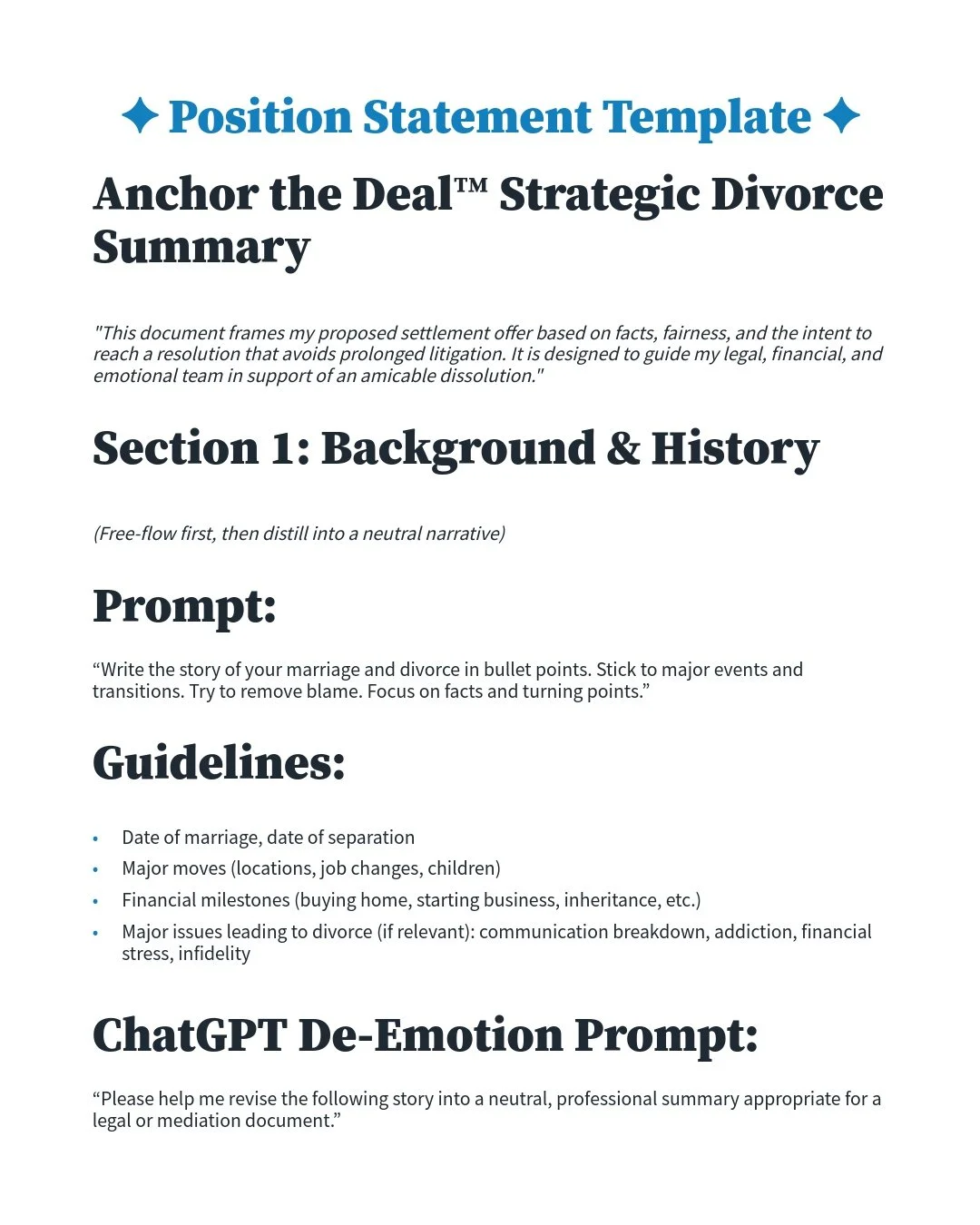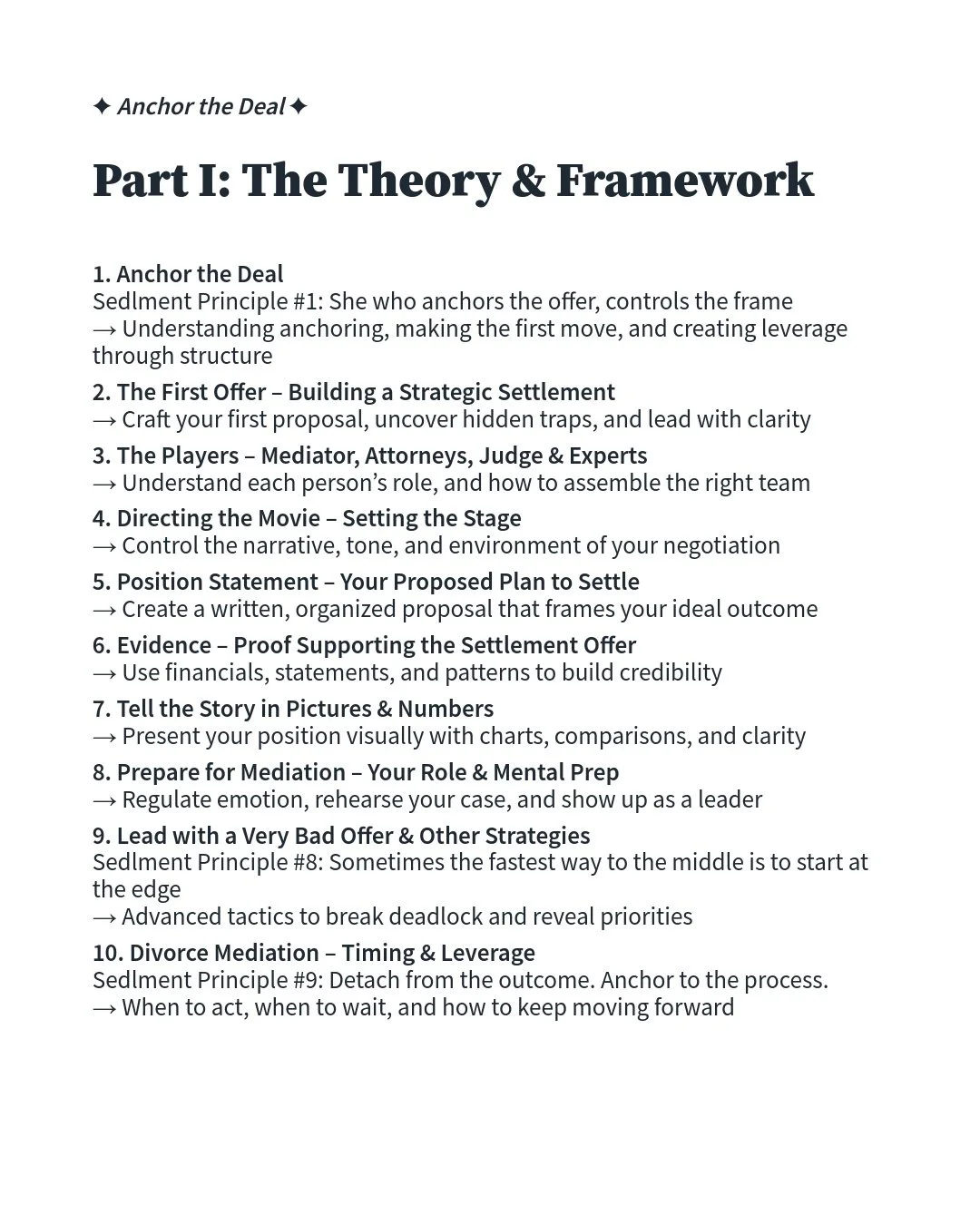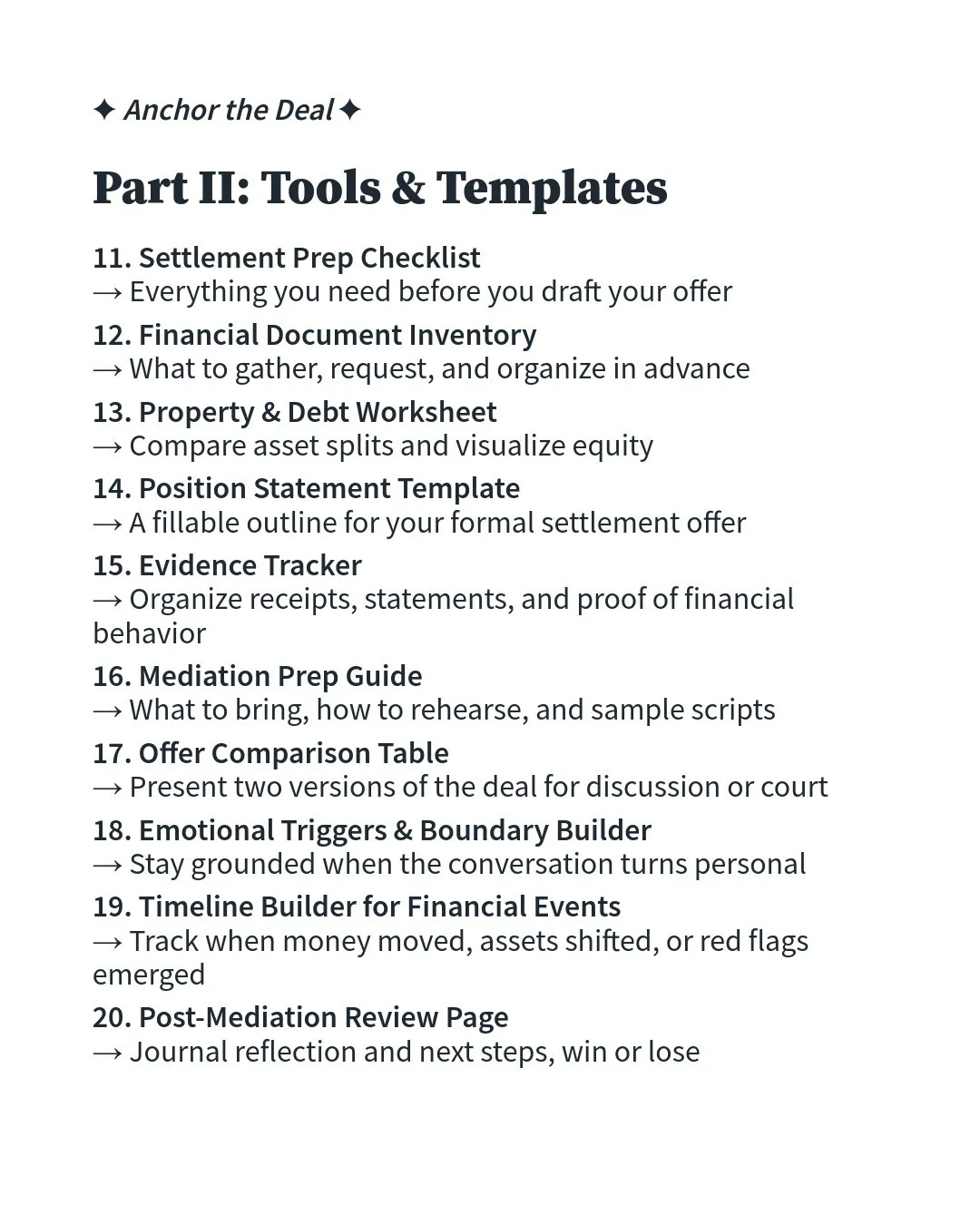What Is Sedlment and Why Is Anchoring So Powerful?
The concept of Sedlment™ blends two ideas: timing and leverage. Sedlment is when you take control of the process early by offering a structured, well-reasoned plan to resolve the divorce. The key tactic? Anchoring. Psychologically getting everyone to move towards your proposal
Let’s say you’re dividing assets, and you make the first offer based on a thoughtful spreadsheet with explanations for each value. Even if your spouse disagrees with part of it, they now must respond to your framework. You’ve defined the playing field.
If you wait, they’ll do it for you—and possibly omit crucial assets or offer unfair divisions you’ll spend time and money disputing.
Checklist: Are You Ready to Make the First Offer?
Before you anchor the deal, you need:
✅ A current list of assets and debts
✅ Access to financial statements (bank, retirement, mortgage, business)
✅ Understanding of your state’s division laws (start with a 50/50 mindset)
✅ Confidence in your offer’s logic—even if you expect pushback
✅ A calm, professional tone (this isn’t personal—it’s math and planning)
If you’re not quite there yet, don’t worry. Keep reading. We’ll help you get there.
Start with the 50/50 Assumption
Most states default to an equitable split, which is often—but not always—50/50. Begin here. List all marital property (assets acquired during the marriage), and debts. Examples include:
Bank accounts
Vehicles
Mortgages
Retirement accounts
Stocks, bonds
Business interests
Loans or credit card debt
Crypto holdings
You don’t have to divide every line item in half. Instead, use a spreadsheet to balance the total equity each person receives. A house might stay with one spouse while the other gets more in retirement funds. The goal: fair outcomes, not identical ones.
Hidden Traps to Watch Out For
This is where leverage matters. Think ahead.
1. Marital Waste
Has your spouse spent significant money on gambling, affairs, or addiction-related behavior? Gather evidence. That spending may be considered waste, and you can argue for a higher share of the remaining marital estate to offset it.
2. Separate Property Claims
Is your spouse claiming an asset is “theirs alone” because it was:
Inherited?
A gift?
Owned before marriage?
They may be right—but they must prove it. If funds were commingled or improved during the marriage, they may have transmuted into marital property. Anchor your offer by identifying and rebutting unreasonable separate property claims.
3. Business Ownership
If your spouse owns a business and you don’t have access to the books, they may claim it’s worth “nothing” or manipulate the numbers. Consider hiring a valuation expert or presenting an estimated value based on public data or industry norms.
Where Might They Push Back?
Always ask:
Where are they incentivized to lie, hide, or delay?
What “loopholes” will they try to exploit?
What emotional buttons might they push to keep you from making an offer at all?
Your first offer isn't final. But it forces movement. Without it, you're stuck in limbo, reacting instead of leading.
Sample Language: How to Present the Offer
Here’s an example of non-combative but clear language:
“I’ve taken the time to gather the relevant financial information and draft a proposed property division. My intent is to create a fair outcome for both of us. This is a starting point for discussion, and I’m open to feedback or clarification.”
This language works well whether you’re:
Writing an email
Presenting in mediation
Talking directly to your spouse or their attorney
Worksheet: Build Your First Offer
Use the following steps to start crafting your anchor offer:
List all known assets and debts
Assign values to each item (approximate if needed)
Create two columns – one for each spouse
Distribute items until totals are roughly equal
Flag any disputed items
Write a one-paragraph explanation for the offer’s fairness
You can build this in Excel, Google Sheets, or a cloud tool like Bublup to keep everything organized and secure.
Sedlment Tip: “Start Strong, Stay Open”
Your offer isn’t a demand—it’s a strategy. You’re showing that you are thoughtful, organized, and fair. You’re showing the other side (and possibly the mediator or judge) that you are here to resolve, not escalate.
But you’re also making it clear: you're not waiting around for crumbs.
In Summary
The first offer is your most powerful negotiation move.
Anchor with fairness, facts, and confidence.
Assume a 50/50 base but adjust for waste, manipulation, or imbalance.
Be prepared for pushback—but don’t wait for permission.
Let them react to you.
You’ve just anchored the deal.




